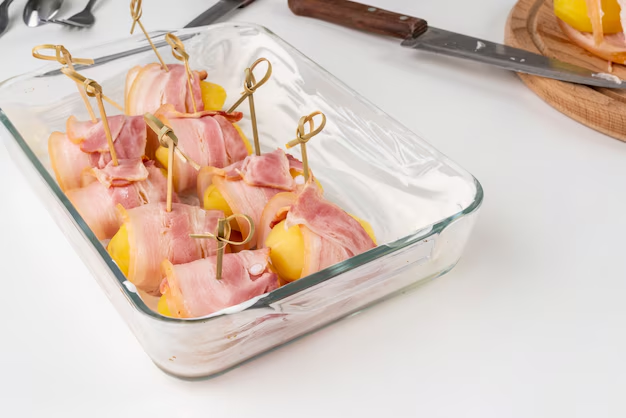Is It Safe to Refrigerate Hot Food Immediately? Exploring the Facts and Guidelines
Deciding when to put hot food in the refrigerator can often feel like a balancing act between food safety and practical storage. If you've ever found yourself standing in the kitchen, pondering whether to store that freshly cooked meal right away or let it cool first, you're not alone. This common dilemma is not just about time and convenience; it’s also about ensuring food remains safe and fresh. In this comprehensive guide, we’ll delve into the various aspects of this question, provide actionable insights, and offer useful tips for managing your culinary creations.
🥘 Understanding the Basics of Food Safety
Why Temperature Matters
The core of the debate around refrigerating hot food stems from the understanding of the "danger zone", a temperature range between 40°F (4°C) and 140°F (60°C), where bacteria are known to grow rapidly. Keeping food out of this range as much as possible is key to preventing foodborne illnesses.
The Role of the Refrigerator
Refrigerators are designed to slow bacterial growth by keeping cooked and raw foods below the 40°F (4°C) threshold. Therefore, the general aim is to cool foods effectively without adding excessive heat to the appliance, which might affect its efficiency and the safety of other food stored inside.
🔍 Common Concerns About Cooling and Refrigeration
Busting the Myth: Hot Food and Refrigerators
A longstanding belief is that hot food can cause the refrigerator to work harder and potentially spoil other items inside. However, modern refrigerators are built to handle such tasks without significant issues. The more immediate concern is how quickly the hot food reaches a safe storage temperature.
Effects on Food Quality
While putting hot food in the fridge might retain its safety, it can potentially impact quality:
- Texture: Foods like pasta or rice can continue to soften.
- Condensation: Moisture from hot food can lead to soggy leftovers.
- Flavor: Prolonged heat can intensify or diminish flavors.
🥕 Practical Cooling Methods: Tips and Techniques
Divide and Conquer
Portioning food into smaller containers can expedite cooling by increasing surface area. This approach not only cools faster but also makes storage more manageable.
Shallow Containers
Opt for shallow containers rather than deep pots or bowls. Spreading the food out allows for quicker dissipation of heat.
Ice Baths
Immersing smaller pots in an ice water bath before refrigeration can bridge the gap from stove to storage safely and efficiently.
Stir Regularly
Stirring helps distribute heat evenly, preventing areas of lingering warmth. This is particularly effective for soups and sauces.
📴 Related Considerations: The Bigger Picture
Leftovers and Batch Cooking
Leftovers can be a convenient meal solution if handled correctly:
- Aim to refrigerate perishable food within two hours of cooking.
- If temperatures are high (above 90°F or 32°C), reduce this time to one hour.
Sustainability and Food Waste
Efficient and safe storage minimizes food waste. This not only benefits your budget but also lessens environmental impact by reducing the amount of food sent to landfills.
Kitchen Organization
Consider how your refrigerator is organized. Proper air circulation helps maintain steady temperatures, while clutter impedes efficiency. Group similar items together, like dairy or produce, allowing for a more intuitive retrieval process.
📋 Summary and Key Takeaways
Here's a concise recap of critical points to remember when deciding how to store hot food:
Cooling Tips:
✅ Use shallow containers for quicker cooling.
✅ Portion large batches to facilitate faster temperature reduction.
✅ Consider ice bath methods for efficient heat dissipation.
✅ Remember to stir dishes like soups to evenly distribute heat.Food Safety:
✅ Aim to keep food out of the danger zone (40°F - 140°F) as much as possible.
✅ Refrigerate leftovers promptly, ideally within two hours, or one if hot.Quality Considerations:
✅ Understand how refrigeration impacts texture and flavor.
✅ Consider your fridge's layout for optimal cooling efficiency.Sustainability Focus:
✅ Efficient storage reduces waste and supports environmental goals.
🤔 A Mindful Approach to Food Storage
Balancing between food safety and maintaining quality is essential when managing leftovers or meal preps. Modern refrigeration systems are up to the task, assuming you follow smart practices for cooling. By applying the techniques and insights discussed in this guide, you can ensure that your culinary efforts remain both delicious and safe, all while contributing to less food waste and more organized kitchen management.
Next time you face that steaming pot of soup or freshly baked casserole, remember these essential tips and strategies to store them safely, preserving their taste and your peace of mind.
